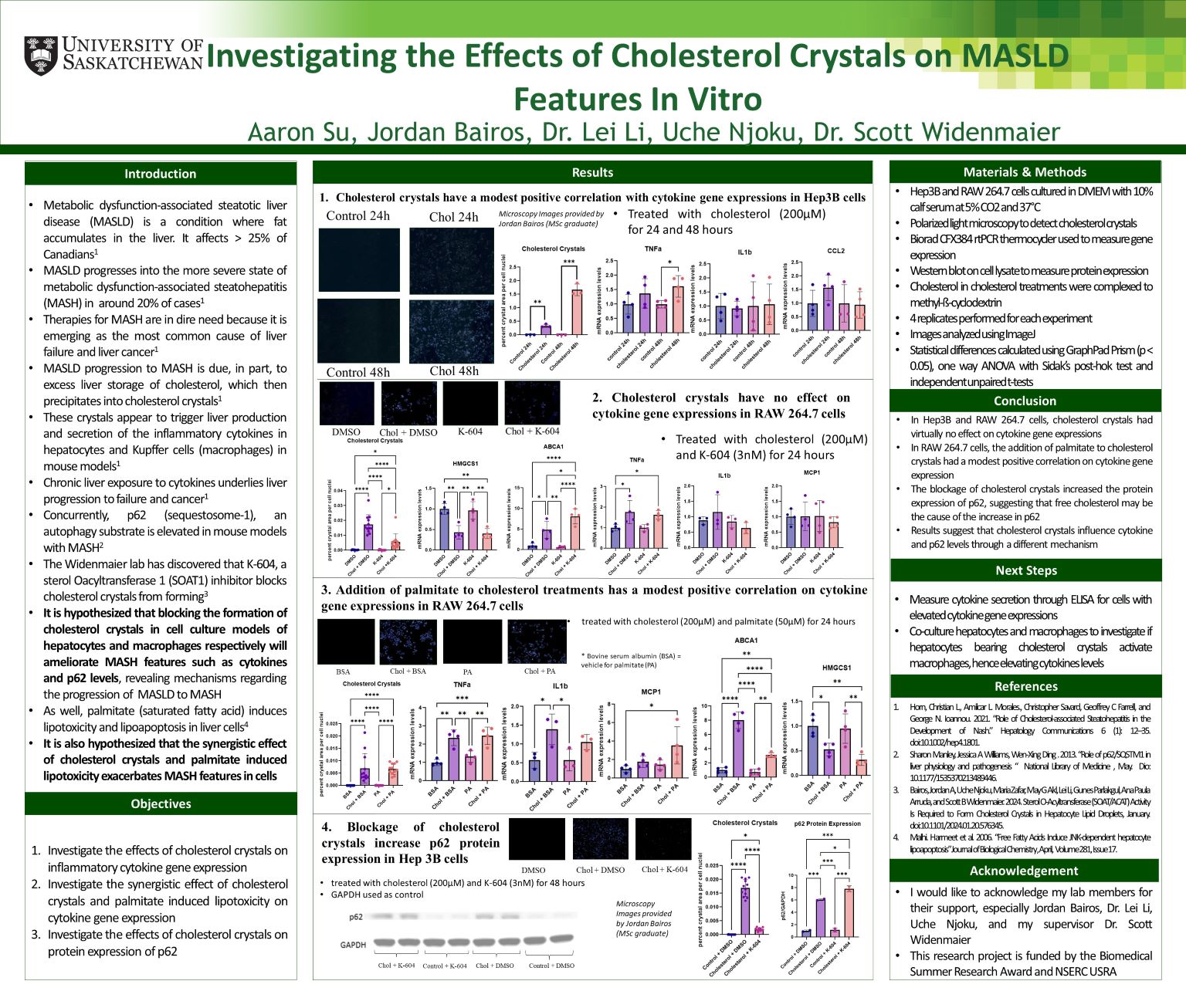
Investigating the Effect of Cholesterol Crystals on Cytokine Expression in Hepatic Cell Culture Models
Aaron Su
Metabolic dysfunction-associated steatotic liver disease (MASLD) is a condition where fat accumulates in the liver, and can progress into the more severe state of metabolic dysfunction-associated steatohepatitis (MASH), which is emerging as the most common cause of liver failure and liver cancer. MASLD progression to MASH is due, in part, to excess liver storage of cholesterol, which then precipitates into cholesterol crystals. In the liver of mouse models, such crystals are positively correlated with inflammatory cytokines, and sequestosome-1 (an autophagy substrate). Therefore, it is hypothesized that in cell culture models of hepatocytes and macrophages respectively, the blockage of cholesterol crystal formation will decrease inflammatory cytokines and sequestosome-1 expression. In addition, the synergistic effect of cholesterol crystals and palmitate (saturated fatty acid) induced lipotoxicity may exacerbate cytokine and sequestosome-1 features in cells. Gene and protein expression results show that cholesterol crystals in such models had virtually no effect on features of interest, suggesting that cholesterol crystals influence these two MASH features through different mechanisms. Further steps include repeating the experiment in a model of co-culturing hepatocytes and macrophages to simulate a more realistic environment of the liver.
